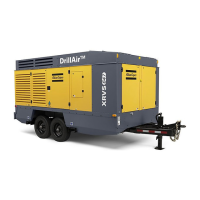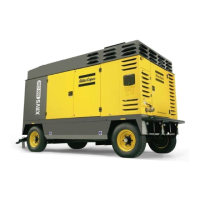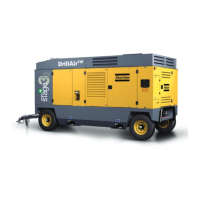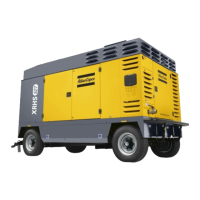- 123 -
Specific fuel consumption
at 100% FAD
at 25 bar (363 psi)
pressure setting
without aftercooler g/m
3
-36.936.5
lb/1000 cu.ft - 2.30 2.27
with aftercooler g/m
3
-38.138.1
lb/1000 cu.ft - 2.38 2.38
Specific fuel consumption
at 100% FAD
at 30 bar (435 psi)
pressure setting
without aftercooler g/m
3
-37.9-
lb/1000 cu.ft - 2.37 -
with aftercooler g/m
3
-39.2-
lb/1000 cu.ft - 2.45 -
Specific fuel consumption
at 100% FAD
at 35 bar (508 psi)
pressure setting
without aftercooler g/m
3
42 - -
lb/1000 cu.ft 2.62 - -
with aftercooler g/m
3
43.5 - -
lb/1000 cu.ft 2.71 - -
Typical oil content of compressed air mg/m
3
free air 3 3 3
oz/1000 cu.ft 0.003 0.003 0.003
Compressed air temperature
at outlet valve
without aftercooler °C 102 102 102
°F 216 216 216
Air volume at inlet grating (approx.)
3)
m
3
/s 15.1 14.6 16.3
cu.ft/s 530 513 573
Noise level
- Sound pressure level (LP) at 7 m distance dB(A) 80 78 80
- Sound power level (LW) is measured according
to ISO 3744
dB(A) 108 106 108
Designation
XRYS 577 - XRYS 1260 XRXS 607 - XRXS 1275 XRVS 647 - XRVS 1350
1)
Free air delivery is measured according to ISO 1217 ed.4 2009 annex D
Tolerance:
• +/- 5% 25 l/s (53 cfm) < FAD < 250 l/s (530 cfm)
• +/- 4% 250 l/s (530 cfm) < FAD
2)
To account for fuel used during regeneration the fuel consumption values have
to be increased with 1.5%. This is an average percentage and is dependent on
the working conditions of the compressor.
3)
Air required for engine and compressor element cooling, for combustion and
for compression.

